Related Research Articles

Solitary confinement is a form of imprisonment in which an incarcerated person lives in a single cell with little or no contact with other people. It is a punitive tool used within the prison system to discipline or separate incarcerated individuals who are considered to be security risks to other incarcerated individuals or prison staff, as well as those who violate facility rules or are deemed disruptive. However, it can also be used as protective custody for incarcerated individuals whose safety is threatened by other prisoners. This is employed to separate them from the general prison population and prevent injury or death.
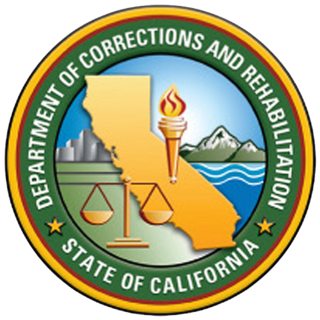
Pelican Bay State Prison (PBSP) is a supermax prison facility in Crescent City, California. The 275-acre (111 ha) prison takes its name from a shallow bay on the Pacific coast, about 2 mi (3.2 km) to the west.

Incarceration in the United States is one of the primary means of punishment for crime in the United States. In 2021, over five million people were under supervision by the criminal justice system, with nearly two million people incarcerated in state or federal prisons and local jails. The United States has the largest known prison population in the world. It has 5% of the world’s population while having 20% of the world’s incarcerated persons. China, with more than four times more inhabitants, has fewer persons in prison. Prison populations grew dramatically beginning in the 1970s, but began a decline around 2009, dropping 25% by year-end 2021.

The prison abolition movement is a network of groups and activists that seek to reduce or eliminate prisons and the prison system, and replace them with systems of rehabilitation and education that do not focus on punishment and government institutionalization. The prison abolitionist movement is distinct from conventional prison reform, which is intended to improve conditions inside prisons.

William C. Holman Correctional Facility is an Alabama Department of Corrections prison located in Atmore, Alabama. The facility is along Alabama State Highway 21, 9 miles (14 km) north of Atmore in southern Alabama.
A prison strike is an inmate strike or work stoppage that occurs inside a prison, generally to protest poor conditions or low wages for penal labor. Prison strikes may also include hunger strikes.
Red Onion State Prison (ROSP) is a supermax state prison located in unincorporated Wise County, Virginia, near Pound. Operated by the Virginia Department of Corrections (VADOC), it houses about 800 inmates. The prison opened in August 1998.
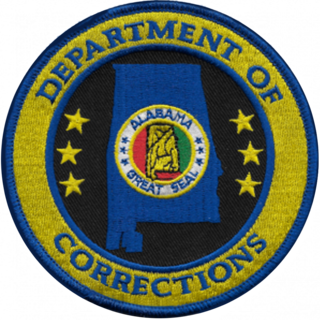
The Alabama Department of Corrections (ADOC) is the agency responsible for incarceration of convicted felons in the state of Alabama in the United States. It is headquartered in the Alabama Criminal Justice Center in Montgomery.
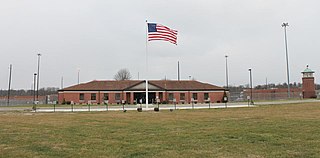
The Federal Correctional Institution, Ashland is a low-security United States federal prison for male inmates in the unincorporated area of Summit in Boyd County, Kentucky, approximately 5 miles (8.0 km) outside the city of Ashland. It is operated by the Federal Bureau of Prisons, a division of the United States Department of Justice. It also includes a satellite prison camp for minimum-security male offenders.
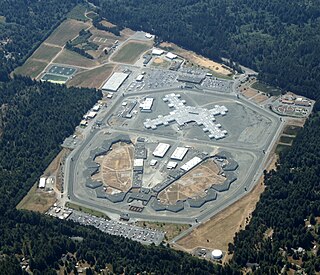
The 2013 California prisoner hunger strike started on July 8, 2013, involving over 29,000 inmates in protest of the state's use of solitary confinement practices and ended on September 5, 2013. The hunger strike was organized by inmates in long term solitary in the Security Housing Unit (SHU) at Pelican Bay State Prison in protest of inmates housed there that were in solitary confinement indefinitely for having ties to gangs. Another hunger strike that added to the movement started the week before in High Desert State Prison. The focus of the High Desert State Prison hunger strike was to demand cleaner facilities, better food and better access to the library.

In the United States, penal labor is a multi-billion-dollar industry. Annually, incarcerated workers provide at least $9 billion in services to the prison system and produce more than $2 billion in goods. The industry underwent many transitions throughout the late 19th and early and mid 20th centuries. Legislation such as the Hawes-Cooper Act of 1929 placed limitations on the trade of prison-made goods. Federal establishment of the Federal Prison Industries (FPI) in 1934 revitalized the prison labor system following the Great Depression. Increases in prison labor participation began in 1979 with the formation of the Prison Industry Enhancement Certification Program (PIECP). The PIECP is a federal program first authorized under the Justice System Improvement Act of 1979. Approved by Congress in 1990 for indefinite continuation, the program legalizes the transportation of prison-made goods across state lines and allows prison inmates to earn market wages in private sector jobs that can go towards tax deductions, victim compensation, family support, and room and board.
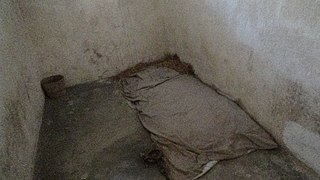
In the United States penal system, upwards of 20 percent of state and federal prison inmates and 18 percent of local jail inmates are kept in solitary confinement or another form of restrictive housing at some point during their imprisonment. Solitary confinement (sometimes euphemistically called protective custody, punitive segregation (PSEG) or room restriction) generally comes in one of two forms: "disciplinary segregation," in which inmates are temporarily placed in solitary confinement as punishment for rule-breaking; and "administrative segregation," in which prisoners deemed to be a risk to the safety of other inmates, prison staff, or to themselves are placed in solitary confinement for extended periods of time, often months or years.
St. Clair Correctional Facility is an Alabama state men's prison located in Springville, St. Clair County, Alabama. The prison was originally built in 1983, and has an operating capacity of 1,514 inmates. The current warden is Guy Noe.

TheIncarcerated Workers Organizing Committee (IWOC) is a prison-led section of the Industrial Workers of the World. Its purpose is 'a union for the incarcerated,' with the goal of abolishing prison slavery, as well as fighting to end the exploitation of working-class people around the world.
The 2016 U.S. prison strike was a prison work stoppage that began on September 9, 2016, the 45th anniversary of the Attica uprising. The strike occurred in 24 states, and over 24,000 prisoners took part in the strike. The involvement of 24,000 prisoners made this strike the largest ever recorded in the U.S. Within a week, inmates from approximately 20 prisons participated. Organizations involved in coordinating the strike included the Incarcerated Workers Organizing Committee and the Free Alabama Movement.
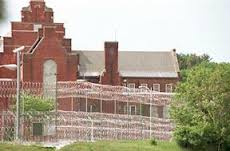
The August Rebellion was an uprising on August 29, 1974, at the Bedford Hills Correctional Facility for Women, a New York State prison in Bedford Hills in the Town of Bedford, Westchester County, New York, United States. In August 1974, about 200 women imprisoned at Bedford Hills rebelled, taking over parts of the prison, in protest of the inhumane treatment of Carol Crooks. A subsequent civil-action lawsuit, ruled in the inmates' favor, led to greater protections of Fourth Amendment rights for incarcerated people.

Safiya Bukhari was an American member of the Black Panther Party. She was also the co-founder of the Free Mumia Abu-Jamal Coalition (NYC), the Jericho Movement for U.S. Political Prisoners and Prisoners of War, and was the vice president of the Republic of New Afrika.
The 2018 U.S. prison strike was a series of work stoppages and hunger strikes in prisons across the United States from August 21 to September 9, 2018. It was one of the largest prison strikes in US history. Striking workers demanded improved living conditions, an end to free prison labor, and other prison reforms. The strike was conducted at least partly in response to the April 2018 prison riot at Lee Correctional Institution, which killed seven inmates and was the deadliest US prison riot of the past 25 years.
Prisoners' Justice Day is a solidarity movement that takes place annually on August 10. The movement began in Canada in 1974 in support of prisoners’ rights and to remember all the people who have died of unnatural deaths while incarcerated. The first Prisoners' Justice Day was held at the Millhaven Institution on August 10, 1975, on the first anniversary of Edward Nalon's death. In addition to a day of mourning, six prisoners took part in an eighteen-day hunger strike. In 1976, August 10 was recognized as a memorial day where prisoners would strike in opposition to the use of solitary confinement and to protest inmate conditions within the Prison System by going on a one-day hunger strike and refusing to work.
The 2010 Georgia prison strike was a prison strike involving prisoners at 7 prisons in the U.S. state of Georgia. The strike, organized by the prisoners using contraband cell phones, began on December 9 and ended on December 15. It was reported at the time to be the largest prison strike in United States history and was followed by similar strikes in several other states, as well as nationwide strikes several years later, in 2016 and 2018.
References
- ↑ Kim, E. Tammy (October 3, 2016). "A National Strike Against "Prison Slavery"". The New Yorker . Archived from the original on August 31, 2018. Retrieved October 16, 2016.
- ↑ Hylton, Antonia (October 3, 2016). "We spoke to the inmate in solitary who inspired a national strike against 'modern-day slave conditions'". VICE News . Archived from the original on February 20, 2019. Retrieved October 16, 2016.
- ↑ Speri, Alice (September 16, 2016). "The Largest Prison Strike in U.S. History Enters Its Second Week". The Intercept . Archived from the original on September 16, 2016. Retrieved October 26, 2016.
- 1 2 Ross, Andrew; Thomas, Aiyuba (2023-05-25). "Alabama Rising". Inquest. Retrieved 2023-07-04.
- 1 2 "About Us | Free Alabama Movement". Archived from the original on 2021-12-04. Retrieved 2023-07-08.
- ↑ McCray, Rebecca (2018-08-28). "Prison Work Is Work". Popula. Retrieved 2023-07-10.
- 1 2 Schwartzappel, Beth (2016-09-27). "A Primer on the Nationwide Prisoners' Strike". The Marshall Project. Retrieved 2023-07-08.
- ↑ Sheets, Connor (2016-09-27). "State confirms that guards went on strike at Alabama prison". Al.com. Retrieved 2023-07-08.
- ↑ Sheets, Connor (2018-09-11). "Alabama prison protest organizer isolated during strike". Al.com. Retrieved 2023-07-08.
- ↑ Ware, Jared (2022-11-11). "Alabama prison strikers' demands push for decarceration". Prism. Retrieved 2023-07-08.